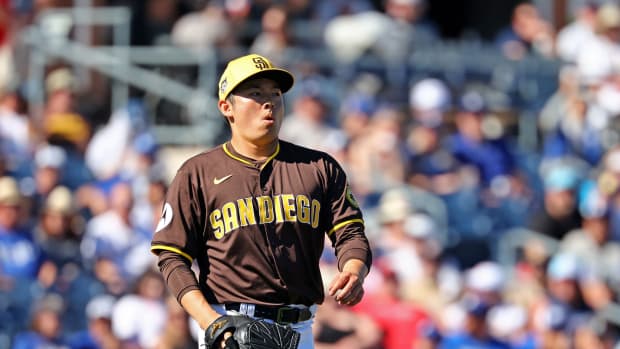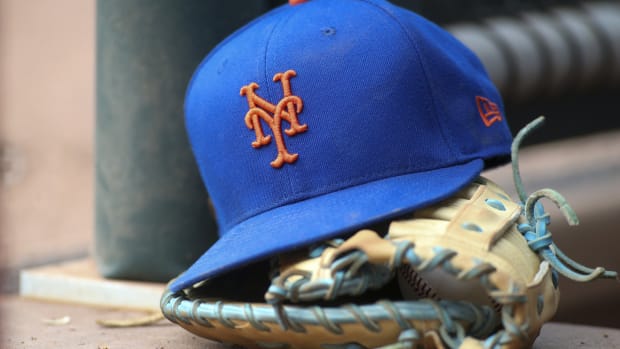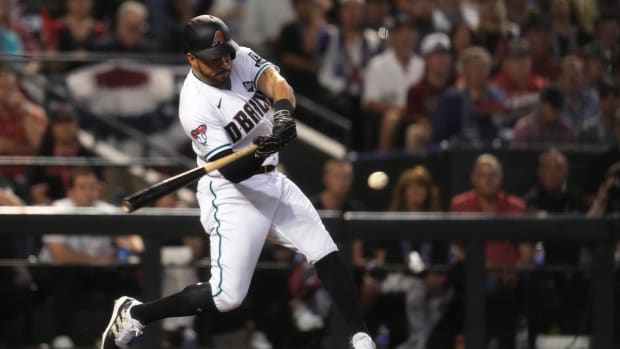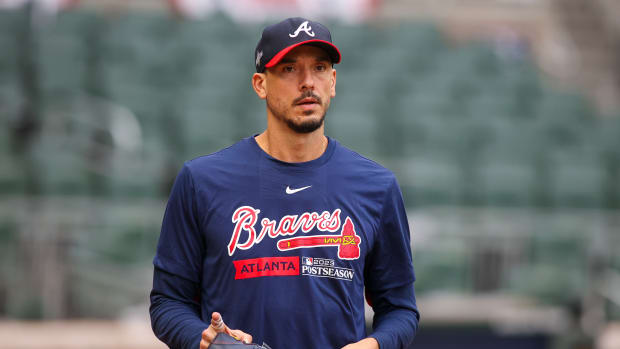The Humility and Ferocity of Roy Halladay
I never heard Roy Halladay raise his voice, never saw him lose even a sliver of his perpetual cool, never once saw doubt or fear in his eyes. His father, Roy Sr., once told me his son grew up in the same earnest manner that we saw from him in the major leagues. “He reminds me of a golden retriever,” the father said.
I once wrote he was the modern Stoic, a Marcus Aurelius on the mound. “Confine yourself to the present,” Aurelius said, and that was Halladay, especially when it came to his craft. He devoted himself totally to the next pitch, damn the money, fame and statistics. So humble was Halladay that he would hand over his pay stub to his wife, Brandy, without ever looking at it.
“We’re probably the only people in the business who think baseball players are paid too much money,” she once told me. “He feels like his job is to do his best every day, and the fact that he’s making so much money is hard on him.”
Just by being himself, Halladay somehow became the best pitcher in baseball with a dearth of attention. When I once asked him about such a rare achievement in this noisy world of sports, he replied, “It’s definitely by choice. For me the satisfaction is always the competition, and the self-gratification knowing you did something to the best of your ability and I think that’s all it will ever be for me. It’s not ever going to be who knows me and what do they think about me. It’s ultimately going to come down to how I went about doing my job.”
Never before or since have I seen ferocity of greatness combined with such humility. Halladay was the genuine article: a gentle, charitable soul with the most aggressive, attacking pitching style you could ever find.
To use the past tense to describe him is painful. Roy Halladay is gone. Just 40 years old. Father, husband, son, friend, coach, volunteer, humanitarian–everything you wish for when a boy becomes a man is what Roy became. He died Tuesday doing what he loved: flying his own airplane. He was an experienced pilot. His Icon A5, a state of the art amphibious aircraft worth about $200,000, barely two months old, crashed into the Gulf of Mexico near his Florida home.
Flying was in his blood. Roy’s dad was a commercial pilot. Roy learned how to fly way back when he was in high school in Colorado and earned his license after his playing career. “He’s a good pilot,” his father once told me, proud that Roy brought to the cockpit that same sense of calm and self-assuredness he took everywhere.
When Roy Sr. went shopping for a new home in Colorado when his son was a boy, he had one requirement: the basement would have to be at least 60 feet, six inches long. They found one. The father built a batting cage in that basement, hung a tire with a mattress behind it, and the boy would practice humming fastballs through the target.
When the father tucked him in at night, and before he would turn out the light, the father and son would talk–almost always about baseball.
“Can you imagine,” the father would say, “what it would be like to be in the major leagues? Can you tell me what that would feel like?”
And the boy would imagine it.
On other nights, the father would ask him what it would be like to pitch in Yankee Stadium, or in the World Series.
It all came true, except for the World Series part. The first time Roy pitched in the postseason, in 2010 with the Philadelphia Phillies, he no-hit the Cincinnati Reds.
At his peak, nobody was better. So driven was Halladay that he had one goal every year: to finish with fewer walks than games started. He actually did it three times (2003, 2005, 2010), including twice while striking out more than 200 batters. Halladay and Cy Young are the only pitchers ever to combine precision and power quite like that.
His story is unique. Halladay pitched to a 10.64 ERA in 2000, and was so bad he was demoted all the way to Class A ball to re-learn how to throw a baseball. With the help of Toronto minor league pitching coach Mel Queen–and a book Brandy bought him about the mental side of pitching, by Harvey Dorfman—Halladay changed from an overhand four-seam fastball/curveball pitcher to a three-quarters sinker/cutter menace. Over the next 11 seasons, and until his arm gave out at age 36, Halladay was 175-78 with a 2.98 ERA. In that span nobody had a better winning percentage (.692), nobody threw more shutouts (19) and nobody came close to throwing so many complete games (64).
Halladay changed pitching. His boring cutters and sinkers–two pitches that appeared the same to the hitter, except one would break late to the left and one to the right–became a new template. Many pitchers copied his style. Nobody was as expert at it as Halladay.
Halladay deserves to go into the Hall of Fame immediately. That may surprise some people. He was that good–the accepted best pitcher in the game for an extended run. But it surprises people because Halladay never sold himself, never wanted the trappings that would have raised his profile.
“I think that’s where he finds a lot of his happiness,” his father once told me. “To stand up and do what he’s been asked to do. He’s expected to perform well and he expects to be there and earn his money and give them what they pay for. I’ve always been proud of him. He’s a delightful young man to hang around with.”
Hard work served him well, fueling his mind and soul as much as his body. He would leave for spring training workouts at 5 a.m.–that is, until somebody else beat him to the Phillies complex one day, so he moved up his commute time to 4:45 in the morning.
I got to know him well in 2005, when I suited up and played for the Toronto Blue Jays for one week of spring training for an SI story. He said very little, and when he spoke he did so in soft, measured tones, and yet everybody in the complex, from teammates to trainers to clubbies, revered him. The pitching coach, Brad Arnsberg, called him T.P.: Total Package.
I’ll never forget stepping into the batting cage to face him. The baseball seemed so heavy and moved so fast I had the impression that he could actually throw it through a brick wall. The boring action was that powerful. The baseball was loud as it passed by me, the seams spinning so fast they whistled as they cut through the air. He made the baseball angrier than anybody else could.
A few years later, during another spring training, this time in Clearwater with the Phillies, Roy sat down with me at a bench near the Phillies’ practice fields. The sun was getting low in the sky. Seeing Halladay in repose like that threw me a bit; the man did not do idle well. It was then that that I asked him what he wanted out of life, having already scored the millions of dollars and the respect of his peers.
“My wife and I talk about it a lot, especially with our sons,” he said. “I really believe if you lead a good life and always try to do the right things I think you’re always impacting someone. That’s what we’ve tried to instill in our kids. For us it’s more important to try to be a good person, all around, especially with other people.
“Our kids go to Christian schools and things, we still have those beliefs but for us it’s really been about we’re going to try to live as quality a life as we can. And hope our kids can do the same and try to be good influences.”
Halladay made good on a life too brief. He went up in that plane, no doubt filled with the joy he always took from flying. He left behind a beautiful family and a beautiful legacy, and for those that knew him, that legacy is more about the man he was, less about the pitcher he became.
And in that last moment, when a life in full ended too soon, the words of Marcus Aurelius from The Meditations never befit him better: “And thou wilt give thyself relief, if thou doest every act of thy life as if it were the last.”



































